
The Enchanting Normandy Coast: A Journey Through History and Nature
Explore the Normandy Coast in France: A captivating blend of historical landmarks, stunning natural scenery, and delightful culinary experiences.
The Normandy Coast in France is a stunning blend of history, culture, and natural beauty. Stretching along the northwestern coast of France, this region holds significant historical importance, being the site of the famous D-Day landings during World War II. Today, visitors can explore the poignant beaches, war memorials, and museums that honor the bravery and sacrifice of those who fought here. The beaches of Omaha, Utah, Gold, Juno, and Sword are not just historical landmarks but also offer breathtaking views and serene environments for reflection. Beyond its historical sites, the Normandy Coast is renowned for its picturesque landscapes. With its charming coastal towns, dramatic cliffs, and lush countryside, it offers a perfect escape for nature lovers. The iconic white cliffs of Étretat, with their natural arches, are a must-see, offering stunning vistas and excellent hiking opportunities. The quaint fishing villages, such as Honfleur, exude a timeless charm with their narrow streets, half-timbered houses, and bustling harbors. Culinary enthusiasts will delight in the local cuisine, known for its fresh seafood, creamy cheeses, and delicious apple-based products like cider and Calvados. The region’s gastronomy is a testament to its rich agricultural heritage, making every meal an experience to savor. Whether you are a history buff, a nature lover, or a foodie, the Normandy Coast promises a memorable and enriching visit.
Local tips in Normandy Coast
- Visit in late spring or early autumn to avoid crowds and enjoy milder weather.
- Rent a car to explore the coastal towns and countryside at your own pace.
- Don't miss the seafood markets in towns like Honfleur for the freshest catches.
- Take guided tours at the D-Day beaches to gain deeper insights into their historical significance.
- Wear comfortable shoes, especially if planning to hike the cliffs of Étretat.
The Enchanting Normandy Coast: A Journey Through History and Nature
The Normandy Coast in France is a stunning blend of history, culture, and natural beauty. Stretching along the northwestern coast of France, this region holds significant historical importance, being the site of the famous D-Day landings during World War II. Today, visitors can explore the poignant beaches, war memorials, and museums that honor the bravery and sacrifice of those who fought here. The beaches of Omaha, Utah, Gold, Juno, and Sword are not just historical landmarks but also offer breathtaking views and serene environments for reflection. Beyond its historical sites, the Normandy Coast is renowned for its picturesque landscapes. With its charming coastal towns, dramatic cliffs, and lush countryside, it offers a perfect escape for nature lovers. The iconic white cliffs of Étretat, with their natural arches, are a must-see, offering stunning vistas and excellent hiking opportunities. The quaint fishing villages, such as Honfleur, exude a timeless charm with their narrow streets, half-timbered houses, and bustling harbors. Culinary enthusiasts will delight in the local cuisine, known for its fresh seafood, creamy cheeses, and delicious apple-based products like cider and Calvados. The region’s gastronomy is a testament to its rich agricultural heritage, making every meal an experience to savor. Whether you are a history buff, a nature lover, or a foodie, the Normandy Coast promises a memorable and enriching visit.
When is the best time to go to Normandy Coast?
Iconic landmarks you can’t miss
Omaha Beach Memorial
Explore Omaha Beach Memorial, a historic landmark commemorating D-Day's bravery amidst breathtaking coastal views.
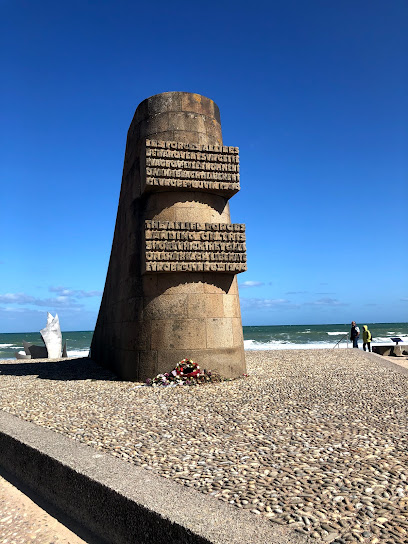
D-Day Museum
Discover the D-Day Museum in Arromanches-les-Bains, a touching tribute to the heroes of World War II and an essential stop for history lovers.
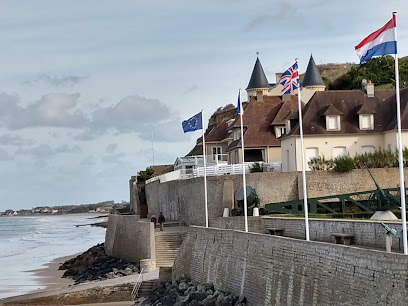
Utah Beach Landing Museum
Explore the Utah Beach Landing Museum, where history comes alive through powerful exhibits and the story of D-Day's pivotal landing.
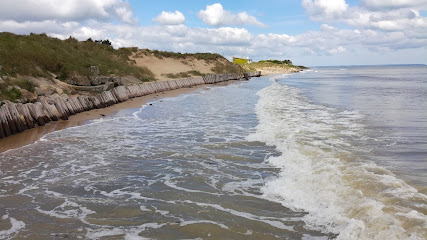
The Pointe Du Hoc
Explore Pointe Du Hoc, a significant World War II historical landmark in Normandy, where history and breathtaking landscapes collide.
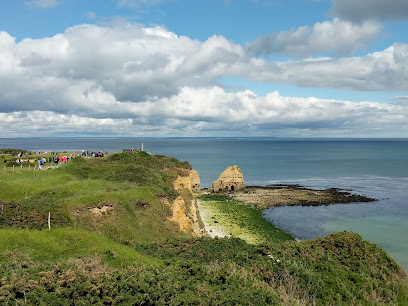
Memorial Museum of Omaha Beach
Visit the Memorial Museum of Omaha Beach to honor the heroes of D-Day and explore the rich history of World War II in Normandy.
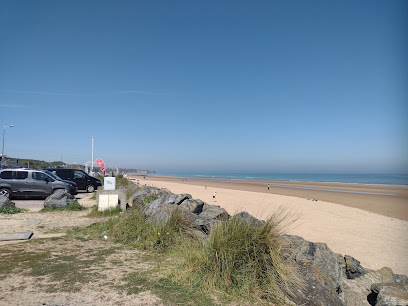
Museum of the Battle of Normandy
Explore the Museum of the Battle of Normandy in Bayeux for an enriching journey through World War II history and the D-Day landings.
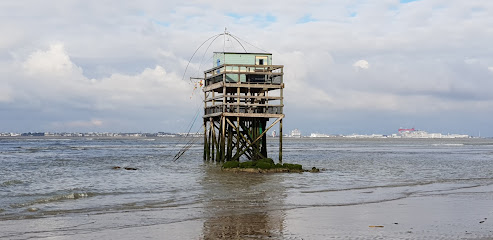
Normandy American Cemetery
Explore the Normandy American Cemetery, a poignant memorial honoring the brave souls of WWII, offering a serene space for reflection and remembrance.
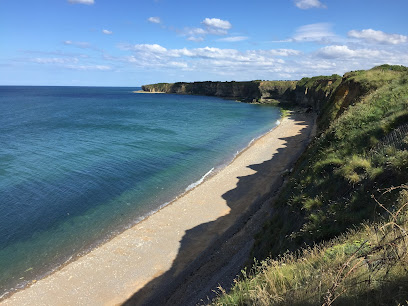
Abbaye de Jumièges
Discover the enchanting beauty of Abbaye de Jumièges, a historical landmark in Normandy, where history meets breathtaking architecture.
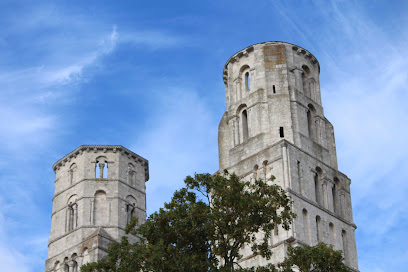
Tour Vauban
Discover the remarkable Tour Vauban, a historic military landmark in Normandy, offering stunning views and rich history for every traveler.
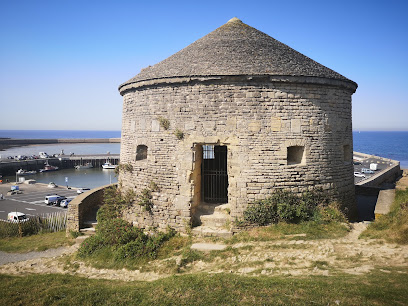
British Normandy Memorial
Explore the British Normandy Memorial, a moving tribute to the bravery of British troops during D-Day, and reflect on their sacrifices for freedom.

Ravalet Castle
Discover the beauty and history of Ravalet Castle in Tourlaville, a stunning blend of architecture and serene gardens perfect for all travelers.
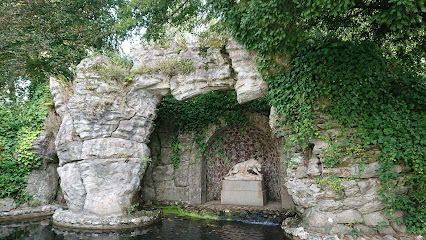
Utah Beach D-Day Landing Memorial and Monument of the Landing of the French 2nd Armored Division
Explore the Utah Beach D-Day Landing Memorial, a historical landmark honoring the bravery of soldiers during WWII with stunning coastal views.
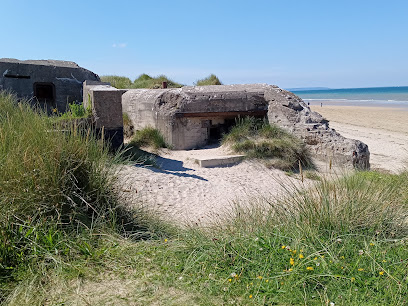
Moulin de Moidrey
Explore the charming Moulin de Moidrey, a cultural landmark in Normandy, offering stunning views, rich history, and a tranquil escape into nature.
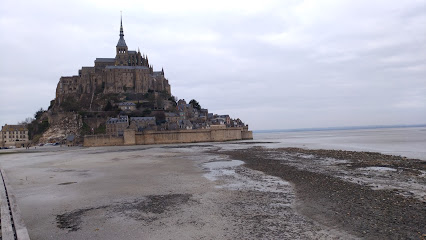
Normandy Beach
Experience the stunning coastal beauty and rich history of Normandy Beach along the iconic English Channel.
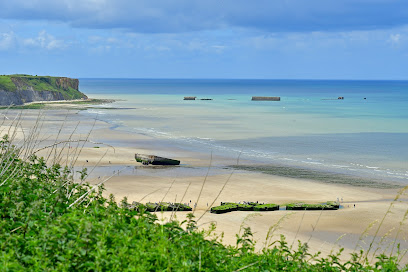
D-Day Memorial, The Queen's Own Rifles of Canada and others
Explore the D-Day Memorial in Bernières-sur-Mer, a poignant tribute to the bravery of soldiers who changed the course of history on the beaches of Normandy.

Unmissable attractions to see
Jardins d'Etretat
Discover the stunning blend of nature and art at Jardins d'Étretat, where breathtaking views and vibrant gardens await in Normandy, France.
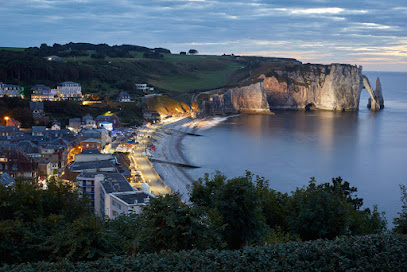
Chateau Guillaume-le-Conquérant
Visit Chateau Guillaume-le-Conquérant in Falaise to experience the history of William the Conqueror and the beauty of medieval architecture in Normandy.
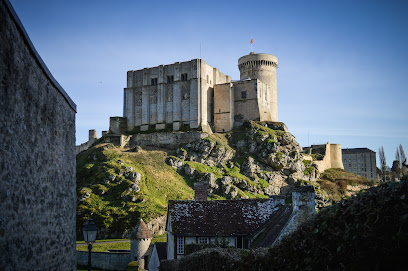
Grande Plage de Trouville
Discover the charm of Grande Plage de Trouville, a stunning beach in Trouville-sur-Mer with golden sands, vibrant pavilions, and breathtaking views.
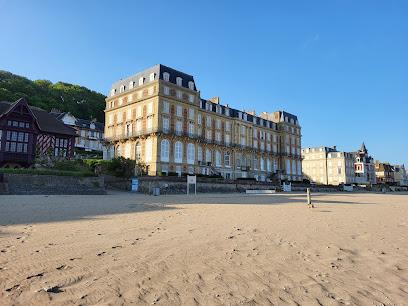
La Falaise d'Amont
Discover the breathtaking beauty of La Falaise d'Amont, a stunning coastal attraction in Étretat, France, renowned for its majestic cliffs and panoramic views.
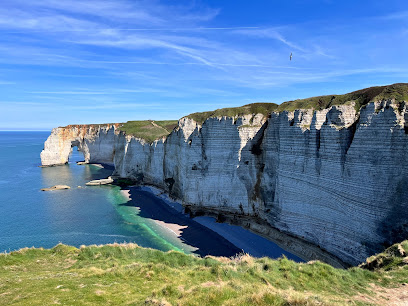
Caen Botanical Garden
Explore the lush landscapes and diverse flora at Caen Botanical Garden, a serene escape in the heart of Normandy.
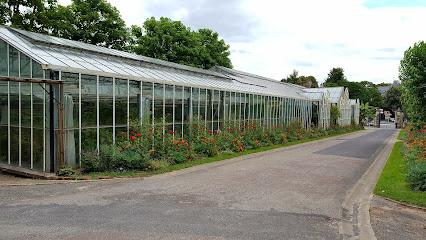
Rock of Oëtre
Explore the breathtaking Rock of Oëtre in Normandy, a stunning destination for nature lovers, hikers, and history enthusiasts alike.
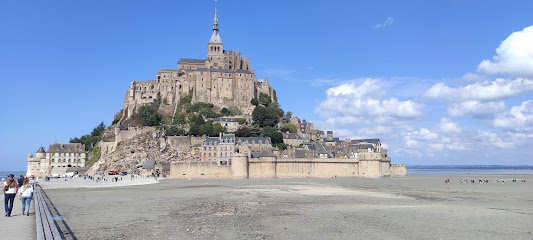
Historial Jeanne d’Arc
Explore the captivating life of Joan of Arc at the Historial Jeanne d'Arc in Rouen, where history comes alive through interactive exhibits and stunning narratives.
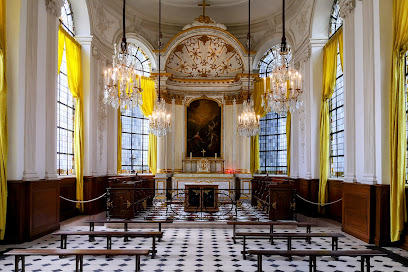
Halles médiévales de Dives-sur-mer
Experience the rich history and vibrant culture at Halles Médiévales de Dives-sur-Mer, a must-visit historical marketplace in Normandy.
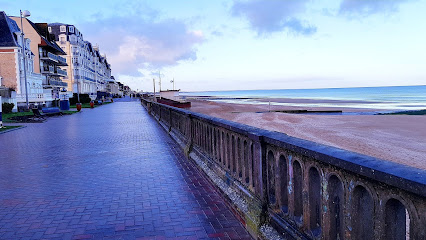
Lisieux Cathedral
Explore the stunning Lisieux Cathedral, a Gothic masterpiece in France, known for its breathtaking architecture and serene ambiance.
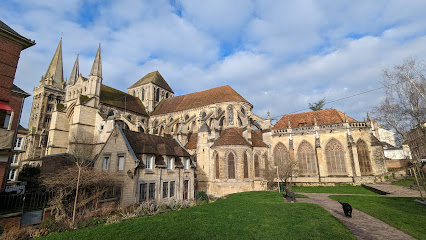
Coutances Botanical Garden
Explore the breathtaking beauty of Coutances Botanical Garden, a serene oasis of diverse plant life and tranquil pathways in picturesque Coutances, France.
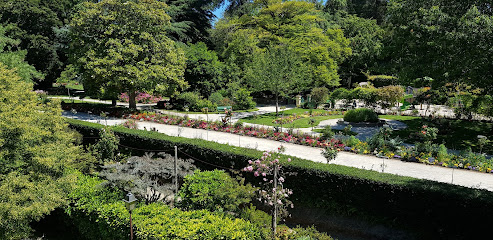
Pirou Castle
Step into history at Pirou Castle, a stunning medieval landmark in Normandy, France, surrounded by enchanting gardens and rich cultural heritage.
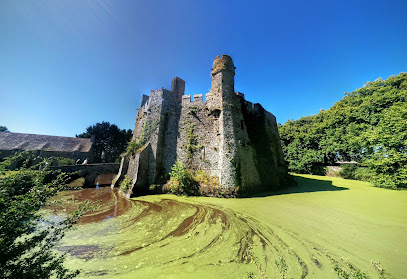
Ravalet Castle
Explore Ravalet Castle in Tourlaville: A beautiful blend of history, architecture, and nature awaits you in this serene French destination.
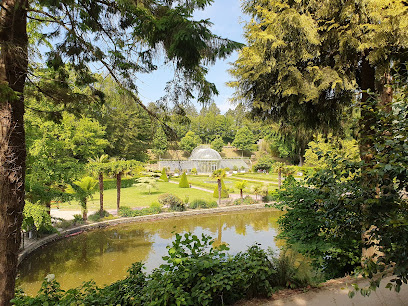
NOPPE
Explore the breathtaking NOPPE botanical garden in Cambremer, a serene haven filled with vibrant flora and peaceful landscapes perfect for nature lovers.

Château de Beauregard
Experience the historical elegance and scenic beauty of Château de Beauregard, a captivating castle in Hérouville-Saint-Clair, France.
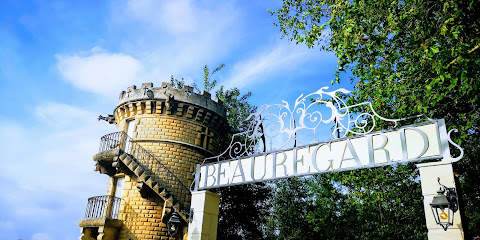
Model Railroading in Clécy (14)
Discover the enchanting world of miniature trains and landscapes at Clécy's renowned Model Railroading attraction, a delight for all ages.
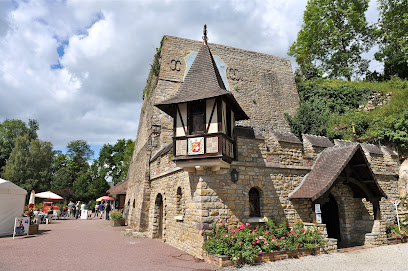
Essential places to dine
Restaurant Brasserie Bar La Crémaillère
Experience authentic French cuisine at Restaurant Brasserie Bar La Crémaillère in Saint-Laurent-sur-Mer, where tradition meets taste.
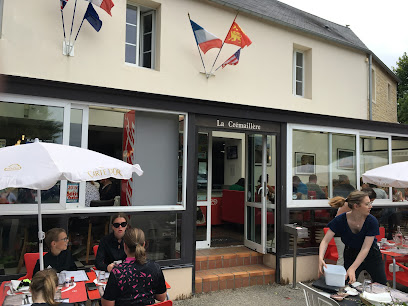
La Fabrique
Experience exquisite French cuisine at La Fabrique in Lion-sur-Mer - where culinary excellence meets seaside charm.
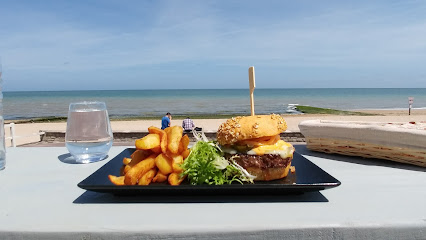
Restaurant L'Omaha
Experience authentic French cuisine at Restaurant L'Omaha in Saint-Laurent-sur-Mer—where every dish tells a story.
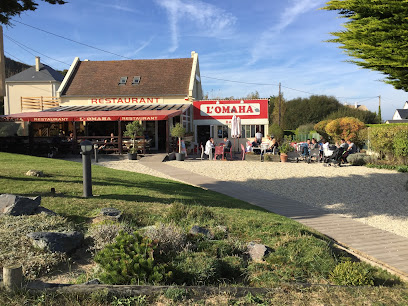
Restaurant La Maison Bleue
Experience exquisite seafood dining at Restaurant La Maison Bleue in Courseulles-sur-Mer—where fresh flavors meet French culinary tradition.

Le Goeland
Discover authentic French cuisine at Le Goeland in Ouistreham – where every dish tells a story of local flavors.
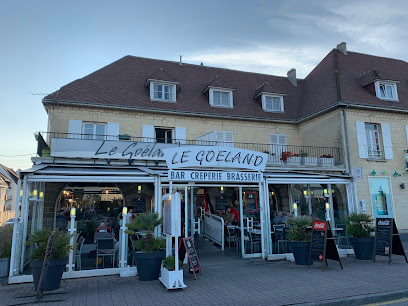
Hôtel - Restaurant : Au P'tit Mousse
Experience authentic French cuisine at Au P'tit Mousse in Courseulles-sur-Mer, where delicious meals meet breathtaking marina views.
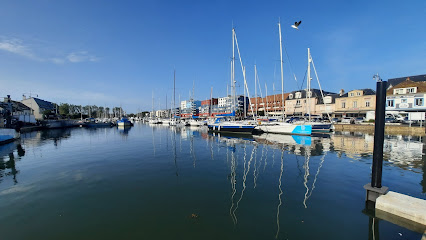
La Ferme de la Rançonnière - Hôtel de charme en Normandie
Experience rustic charm and exquisite cuisine at La Ferme de la Rançonnière, a hidden gem in beautiful Normandy.
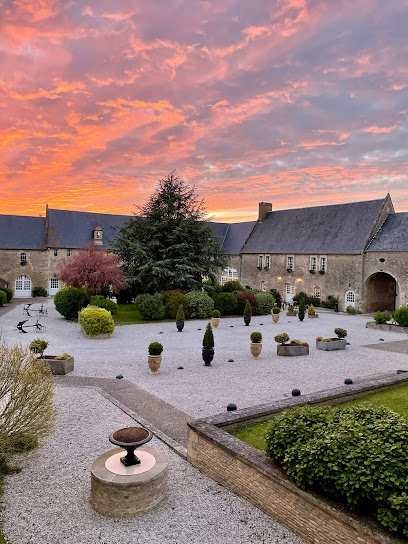
Le Bistrot d'à Côté
Discover authentic French cuisine at Le Bistrot d'à Côté—where seafood meets tradition in Port-en-Bessin-Huppain.
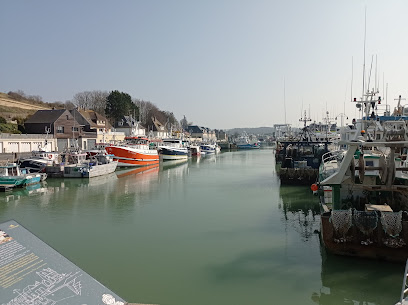
La Taverne
Experience exquisite French cuisine at La Taverne in Lion-sur-Mer - where tradition meets flavor in a charming coastal setting.
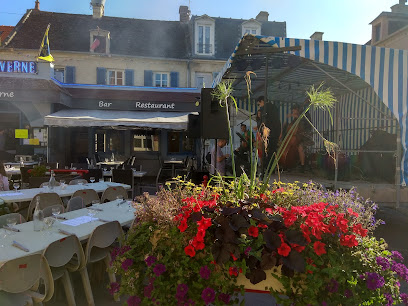
Restaurant la Voile Blanche - Ouistreham Riva Bella
Discover exquisite French cuisine at Restaurant La Voile Blanche in Ouistreham – where every dish tells a story.
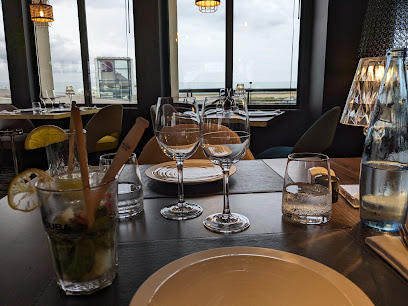
L'R DU PORT - HOTEL RESTAURANT
Experience authentic French cuisine with stunning harbor views at L'R DU PORT Hotel Restaurant in Courseulles-sur-Mer.
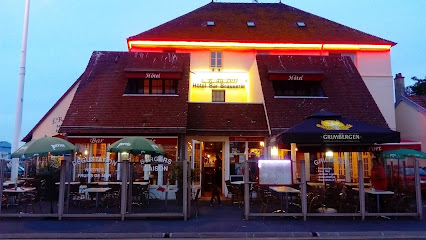
Restaurant La Lieutenance
Experience exquisite French fine dining at Restaurant La Lieutenance in Honfleur - where culinary artistry meets fresh seafood delights.
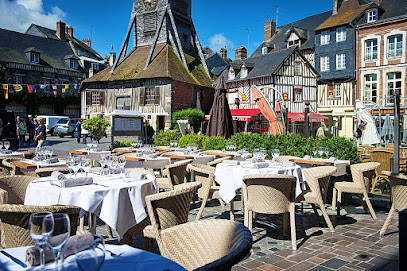
Le Clos Normand Restaurant Hôtel
Experience exquisite dining at Le Clos Normand Restaurant Hôtel, where culinary artistry meets coastal charm in Saint-Aubin-sur-Mer.
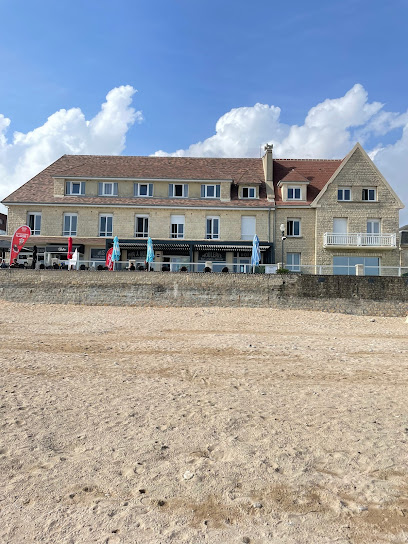
La Rose Des Vents
Discover authentic French cuisine at La Rose Des Vents in Ouistreham - a delightful dining experience awaits!
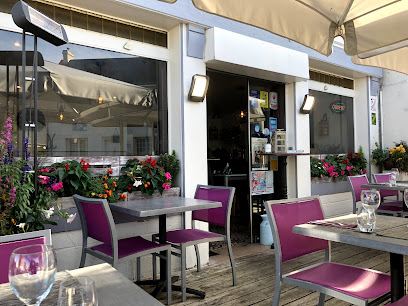
La Sapinière
Experience authentic French cuisine and craft brews at La Sapinière in beautiful Saint-Laurent-sur-Mer.

Markets, malls and hidden boutiques
Docks Vauban
Discover Docks Vauban, Le Havre's premier shopping mall, offering a delightful mix of brands, dining, and entertainment in a stunning waterfront setting.
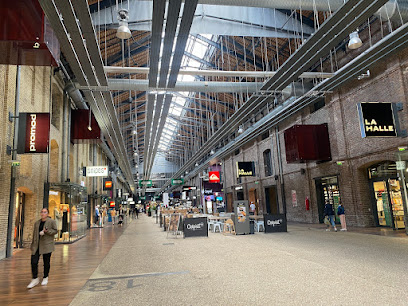
Mondeville 2
Discover the lively Mondeville 2 Shopping Mall in Normandy, a hub for shopping, dining, and entertainment that caters to every visitor's desire.

Primark
Explore Primark in Le Havre for stylish and affordable fashion options in the heart of Les Docks Vauban shopping center.
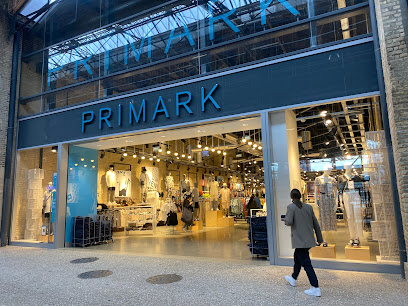
HONFLEUR NORMANDY OUTLET
Shop in style at Honfleur Normandy Outlet, where designer brands meet delightful discounts amid the scenic beauty of Normandy.
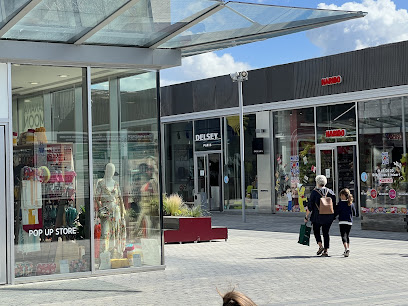
COTY
Discover an array of shops and boutiques at COTY, the ultimate shopping destination in Le Havre, where style and variety meet.
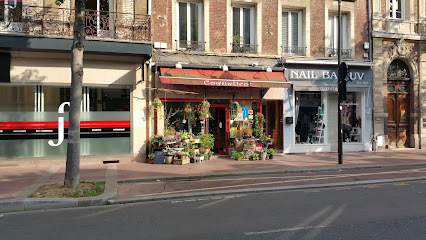
Centre Commercial Les Eléis - Le Quotidien Complice!
Experience shopping like never before at Les Eléis, Cherbourg's lively shopping mall with diverse retail and dining options.
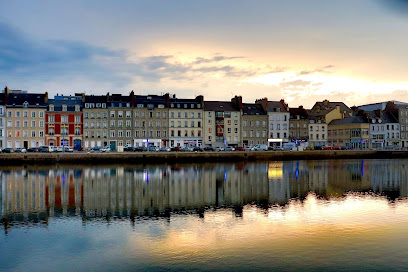
Centre commercial Côte de Nacre
Explore a diverse shopping experience at the Centre Commercial Côte de Nacre, where fashion, food, and fun come together in Caen!
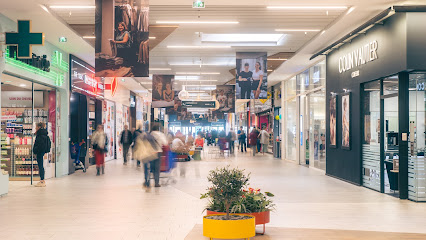
Beach Riva Bella
Discover the beauty of Beach Riva Bella in Ouistreham, a picturesque sandy retreat perfect for sunbathing, water sports, and stunning coastal views.
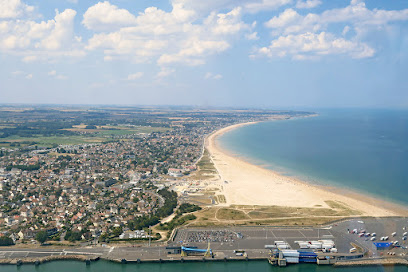
Galeries Lafayette Caen
Explore Galeries Lafayette Caen: A premier destination for fashion, beauty, and lifestyle in the heart of Caen.
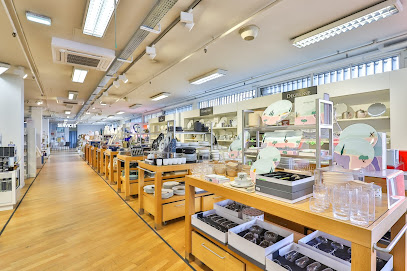
McArthurGlen Paris-Giverny
Explore McArthurGlen Paris-Giverny: A premier outlet mall offering fashionable finds and delicious dining in the heart of Giverny’s picturesque landscape.
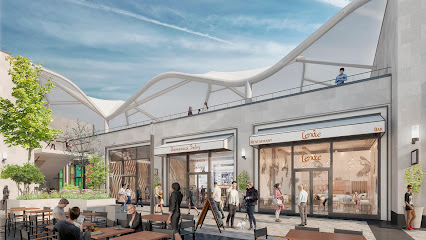
Cadiac
Experience the charm of Cadiac, a discount store in Grentheville, where unique finds and unbeatable prices await every savvy shopper.
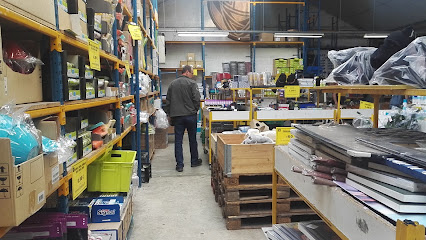
Les Sablés d'Asnelles
Experience the exquisite flavors of Normandy at Les Sablés d'Asnelles, where delightful pastries and cozy surroundings await.
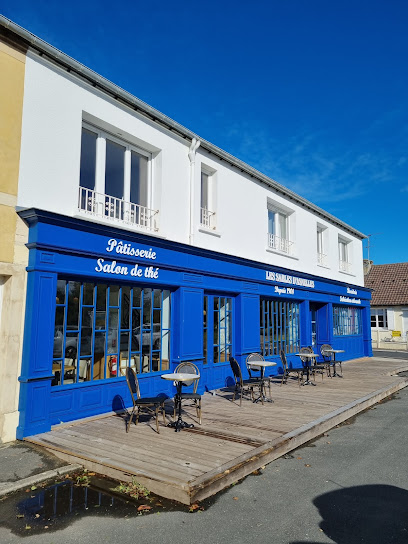
FORUM+
Explore FORUM+ in Carpiquet for unique home goods, seasonal decor, and exquisite garden furniture that transform your living space into a haven of elegance.

Printemps Le Havre
Discover the ultimate shopping experience at Printemps Le Havre, where fashion meets luxury in a vibrant retail paradise.
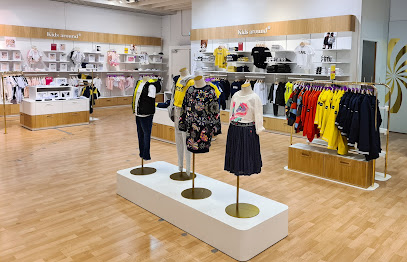
Musée des Automates de Falaise
Discover the magic of mechanical artistry at the Musée des Automates de Falaise, a treasure trove of whimsical automatons and family-friendly fun.
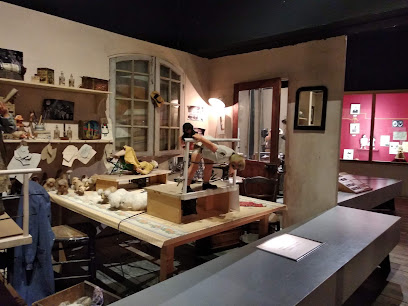
Essential bars & hidden hideouts
Sunset Beach
Discover the charm of Sunset Beach, a culinary gem in Benerville-sur-Mer, offering exquisite tapas and breathtaking sea views.
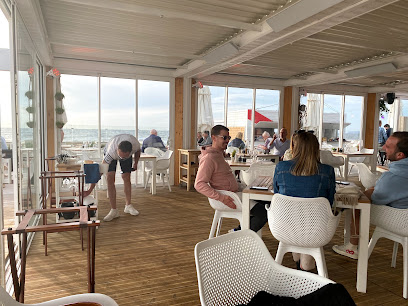
Le Trappist
Discover the vibrant atmosphere and extensive beer selection at Le Trappist, a top beer hall and pub in Caen, perfect for both locals and tourists.
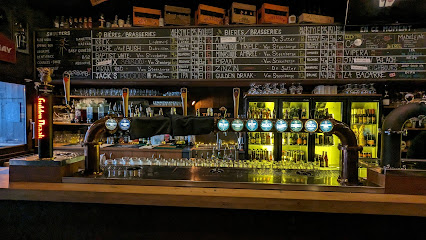
Hurricane Bar
Discover the vibrant atmosphere at Hurricane Bar, where cocktails, chocolates, and coastal charm come together in Villers-sur-Mer.
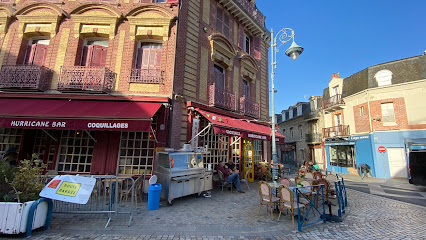
Delirium Café
Discover the lively ambiance and extensive drink selection at Delirium Café in Caen, a must-visit bar for every traveler.
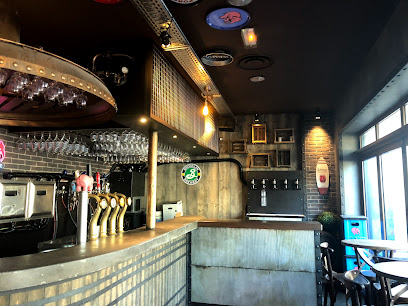
Côcoon Bar
Experience the vibrant nightlife at Côcoon Bar in Rouen, where delicious cocktails and tapas meet a lively atmosphere.
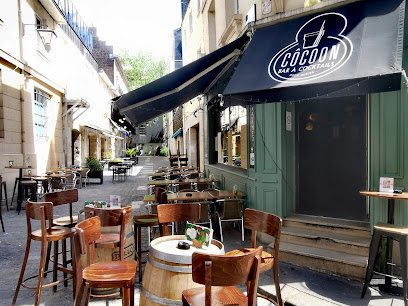
Carpedien Cabourg
Experience the best of French wine and cuisine at Carpedien Cabourg, a charming wine bar and restaurant overlooking the picturesque coast.
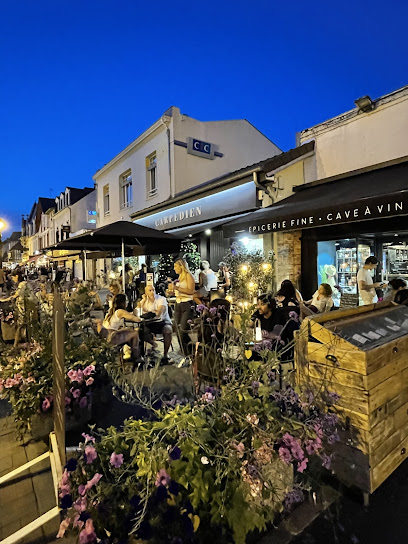
Le Pub
Discover the charm of Le Pub in Cabourg, where delicious cuisine meets a vibrant atmosphere, perfect for relaxation and socializing by the sea.
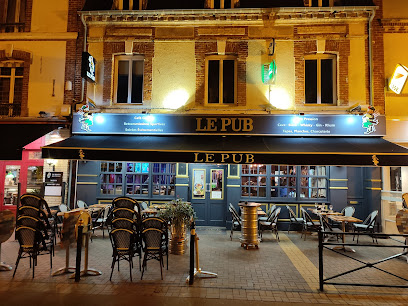
Papa Jerry
Discover the lively ambiance at Papa Jerry in Caen, where exceptional drinks and a welcoming atmosphere await every visitor.
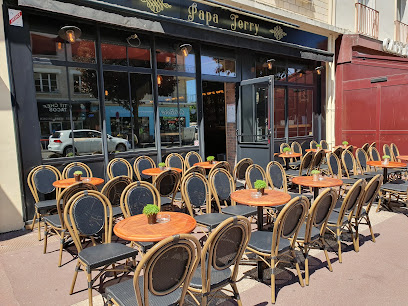
Le Conquérant
Experience the warmth of Irish hospitality at Le Conquérant, Bayeux's beloved Irish pub offering hearty meals and a vibrant atmosphere.

Au Chef Raide
Discover the cozy charm of Au Chef Raide in Caen, where delightful drinks and a vibrant atmosphere await every visitor.
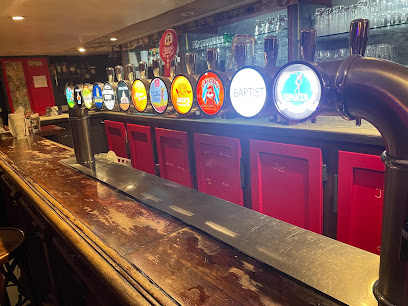
Jolly Roger
Experience the vibrant nightlife of Caen at Jolly Roger, a cocktail bar known for its creative drinks and lively atmosphere.
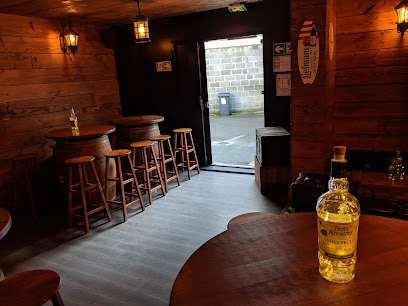
Bar de l'Isle
Discover the charming Bar de l'Isle in Pont-d'Ouilly, where delightful drinks and local culture meet in a cozy, welcoming atmosphere.

The Dad and Son
Discover the charm of Cabourg at The Dad and Son, a cozy bar known for its welcoming atmosphere and delightful drink selection.
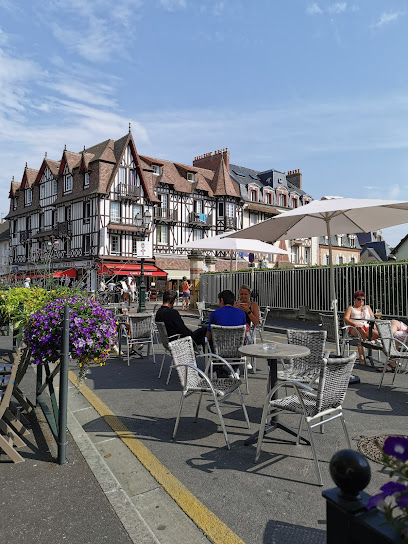
La Case Départ
Discover La Case Départ, a cozy bar in Caen, offering a delightful atmosphere and an impressive selection of drinks to unwind after a day of exploration.
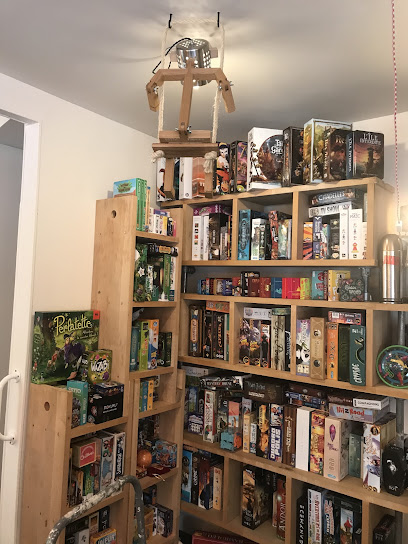
Normandy Bar
Experience the perfect blend of relaxation and local charm at Normandy Bar in Isigny-sur-Mer, where delightful drinks meet friendly ambiance.
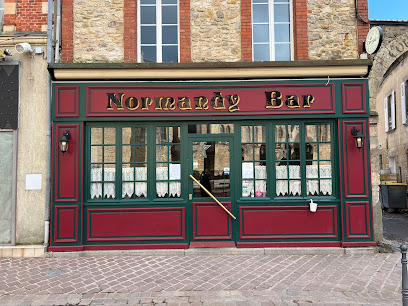
Local Phrases about Normandy Coast
-
- HelloBonjour
[bon-zhoor] - GoodbyeAu revoir
[oh reh-vwahr] - YesOui
[wee] - NoNon
[nohn] - Please/You're welcomeS'il vous plaît/De rien
[seel voo pleh/dee ryehn] - Thank youMerci
[mehr-see] - Excuse me/SorryExcusez-moi/Désolé
[ex-kew-zay mwa/day-zoh-lay] - How are you?Comment ça va?
[koh-mohn sah vah] - Fine. And you?Bien. Et vous?
[byehn/eh voo] - Do you speak English?Parlez-vous anglais?
[par-lay voo on-glay] - I don't understandJe ne comprends pas
[zhuh nuh kohm-prahnd pah]
- HelloBonjour
-
- I'd like to see the menu, pleaseJe voudrais voir la carte, s'il vous plaît
[zhuh voo-dray vwahr lah kart, seel voo pleh] - I don't eat meatJe ne mange pas de viande
[zhuh nuh mahnj pah duh vyand] - Cheers!Santé!
[sahn-tay] - I would like to pay, pleaseJe voudrais payer, s'il vous plaît
[zhuh voo-dray pay-ay, seel voo pleh]
- I'd like to see the menu, pleaseJe voudrais voir la carte, s'il vous plaît
-
- Help!Au secours!
[oh suh-koor] - Go away!Allez-vous en!
[ah-lay voo ahn] - Call the Police!Appelez la police!
[ah-peh-lay lah poh-lees] - Call a doctor!Appelez un médecin!
[ah-peh-lay uh may-duh-sahn] - I'm lostJe suis perdu(e)
[zhuh swee pair-doo] - I'm illJe suis malade
[zhuh swee mah-lahd]
- Help!Au secours!
-
- I'd like to buy...Je voudrais acheter...
[zhuh voo-dray zheh-tay...] - I'm just lookingJe regarde juste
[zhuh ruh-gard zhuhst] - How much is it?Combien ça coûte?
[kohm-byen sah koot] - That's too expensiveC'est trop cher
[say troh shair] - Can you lower the price?Pouvez-vous baisser le prix?
[poo-veh voo beh-say luh pree]
- I'd like to buy...Je voudrais acheter...
-
- What time is it?Quelle heure est-il?
[kell ur eh-tee] - It's one o'clockIl est une heure
[eel eh oon ur] - Half past (10)Dix heures et demie
[dees ur eh duh-mee] - MorningMatin
[mah-tahn] - AfternoonAprès-midi
[ah-pray mee-dee] - EveningSoir
[swahr] - YesterdayHier
[yehr] - TodayAujourd'hui
[oh-zhoor-dwee] - TomorrowDemain
[duh-mahn] - 1Un
[uhn] - 2Deux
[duh] - 3Trois
[twah] - 4Quatre
[kah-truh] - 5Cinq
[sank] - 6Six
[sees] - 7Sept
[set] - 8Huit
[weet] - 9Neuf
[nuhf] - 10Dix
[dees]
- What time is it?Quelle heure est-il?
-
- Where's a/the...?Où se trouve...
[oo suh troov] - What's the address?Quelle est l'adresse?
[kell eh lah-dress] - Can you show me (on the map)?Pouvez-vous me montrer (sur la carte)?
[poo-veh voo muh mohn-tray (surr lah kart)] - When's the next (bus)?Quand est le prochain (bus)?
[kahnd eh luh proh-shahn (bus)] - A ticket (to ....)Un billet (pour ....)
[uhn bee-yay (poor)]
- Where's a/the...?Où se trouve...
History of Normandy Coast
-
Normandy's name itself derives from the Norsemen (Vikings) who settled in the area during the 9th and 10th centuries. Led by Rollo, a Viking leader, these settlers established the Duchy of Normandy in 911 AD after signing the Treaty of Saint-Clair-sur-Epte with King Charles the Simple of France. This era marked the beginning of Normandy's unique cultural blend of Norse and Frankish influences.
-
In 1066, Duke William II of Normandy, also known as William the Conqueror, launched an invasion of England. The Battle of Hastings on October 14, 1066, was a pivotal event where William defeated King Harold II. This conquest had a profound impact on English history, language, and culture, integrating Norman customs and governance into English society.
-
During the Middle Ages, Normandy flourished as a duchy under the rule of the Norman dukes. The region's strategic location made it a significant center for trade and commerce. The construction of impressive architectural feats, such as the Abbey of Mont-Saint-Michel and the Cathedral of Rouen, exemplified the region's wealth and religious devotion.
-
Normandy played a crucial role in the Hundred Years' War (1337-1453) between England and France. The region witnessed numerous battles and sieges, including the Siege of Caen in 1346 and the Battle of Formigny in 1450. The war significantly affected Normandy's economy and population, but it ultimately remained under French control after the war ended.
-
On June 6, 1944, the Normandy coast became the focal point of Operation Overlord, the Allied invasion of German-occupied Western Europe during World War II. Known as D-Day, this massive military operation involved landings on five beachheads: Utah, Omaha, Gold, Juno, and Sword. The success of the landings marked the beginning of the liberation of Western Europe from Nazi control.
-
Following the devastation of World War II, Normandy underwent extensive reconstruction. Towns and cities like Caen, which were heavily bombed during the war, were rebuilt. The region commemorated its wartime history through numerous museums, memorials, and cemeteries, preserving the memory of those who fought and died during the D-Day landings and subsequent battles.
-
Normandy's rich cultural heritage is reflected in its traditions, cuisine, and festivals. The region is famous for its dairy products, including Camembert cheese, as well as its apple orchards and cider production. Festivals such as the Fête de la Mer in Granville celebrate Normandy's maritime heritage. The region's picturesque villages, historic towns, and beautiful landscapes continue to attract visitors from around the world.
Normandy Coast Essentials
-
The Normandy Coast in France is accessible by various means of transportation. The nearest major airport is Paris Charles de Gaulle (CDG), located about 2-3 hours away by car or train. From Paris, you can take a direct train to cities like Caen, Bayeux, or Le Havre. If you prefer driving, renting a car is a convenient option and offers flexibility to explore the scenic routes along the coast.
-
Once you arrive in Normandy, you have several transportation options. Trains are efficient for traveling between major towns such as Caen, Rouen, and Deauville. Local buses connect smaller towns and villages. Renting a car is highly recommended for exploring rural areas and coastal routes at your own pace. Bicycles are also a popular choice for short distances, especially in more tourist-friendly areas.
-
The official currency in France is the Euro (EUR). Credit and debit cards are widely accepted in most establishments, including hotels, restaurants, and shops. However, it is advisable to carry some cash, especially in smaller towns and rural areas where card facilities might be limited. ATMs are available in most towns, but ensure you have sufficient cash before venturing into more remote areas.
-
Normandy is generally a safe destination for tourists. However, like any travel destination, it is wise to take standard safety precautions. Avoid isolated areas at night and keep an eye on your belongings in crowded places, especially in larger cities like Rouen and Caen. There are no specific high-crime areas targeting tourists, but staying vigilant is always best practice.
-
In case of an emergency, dial 112 for immediate assistance, which is the European emergency number. Local police stations and medical facilities are available in major towns. It is highly recommended to have travel insurance that covers medical emergencies. Pharmacies are widely available for minor health issues, and staff can often provide basic medical advice and over-the-counter medications.
-
Fashion: Do dress smartly and modestly, especially when visiting historical sites and churches. Avoid overly casual or revealing clothing. Religion: Do respect local customs and traditions, especially when entering religious sites. Ensure to cover your shoulders and knees, and refrain from loud conversations. Public Transport: Do validate your ticket before boarding trains and buses. Don’t speak loudly or play music on public transport. Greetings: Do greet people with a polite 'Bonjour' and a handshake. Don’t use informal expressions unless you are familiar with the person. Eating & Drinking: Do try local specialties like Camembert cheese and cider. Don’t rush through meals; dining is a leisurely activity in France.
-
To experience Normandy Coast like a local, consider visiting the weekly markets in towns such as Honfleur and Bayeux, where you can buy fresh produce and artisanal goods. Engage with locals, as they are generally friendly and willing to share insights about their region. Don’t miss the chance to explore the D-Day landing beaches and the picturesque Mont-Saint-Michel. For a unique experience, try staying in a local 'chambre d'hôtes' (bed and breakfast) to get a more intimate feel of the local culture.
Trending Landmarks in Normandy Coast
-
Omaha Beach Memorial
-
D-Day Museum
-
Utah Beach Landing Museum
-
The Pointe Du Hoc
-
Memorial Museum of Omaha Beach
-
Museum of the Battle of Normandy
-
Normandy American Cemetery
-
Abbaye de Jumièges
-
Tour Vauban
-
British Normandy Memorial
-
Ravalet Castle
-
Utah Beach D-Day Landing Memorial and Monument of the Landing of the French 2nd Armored Division
-
Moulin de Moidrey
-
Normandy Beach
-
D-Day Memorial, The Queen's Own Rifles of Canada and others
Nearby Cities to Normandy Coast
-
Things To Do in Gorey
-
Things To Do in St. Clement
-
Things To Do in Trinity
-
Things To Do in St. Helier
-
Things To Do in St. Lawrence
-
Things To Do in St. Aubin
-
Things To Do in St. Peter
-
Things To Do in St. Brelade
-
Things To Do in St. Ouen
-
Things To Do in Rouen
-
Things To Do in St. Anne
-
Things To Do in Saint-Malo
-
Things To Do in St. Sampson
-
Things To Do in St. Peter Port
-
Things To Do in St. Martin












